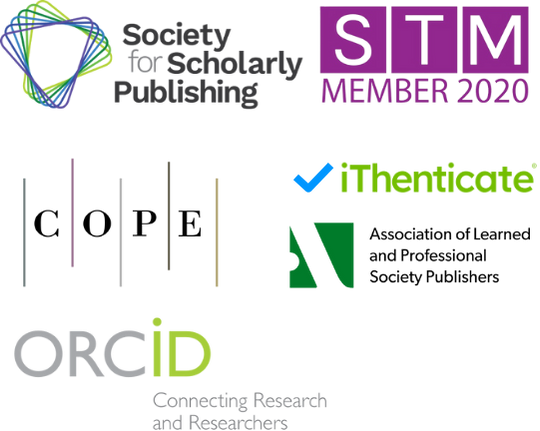Novel Two-Dimensional Copper Coordination Networks for Enzyme Inhibition: Fabrication Strategies and Mechanisms
DOI:
https://doi.org/10.71222/k2ym5y23Keywords:
copper coordination polymers, enzyme inhibition, two-dimensional materials, auxiliary ligands, urease inhibitors, metal-organic frameworksAbstract
Two-dimensional copper-based coordination polymers have emerged as promising candidates for enzyme inhibition applications, particularly in the development of urease inhibitors for agricultural and biomedical applications. This paper presents a comprehensive investigation of novel fabrication strategies for synthesizing copper coordination networks with enhanced enzyme inhibition properties. The research focuses on the strategic use of auxiliary ligands to regulate the structural properties and optimize the inhibitory performance of these materials. Through systematic design approaches, we demonstrate how V-shaped second auxiliary ligands can be employed to create highly efficient two-dimensional copper-based coordination polymers with superior urease inhibition capabilities. The fabrication methodology involves careful selection of organic linkers and metal nodes to achieve optimal pore size distribution and surface functionalization. Mechanistic studies reveal that the inhibition process occurs through competitive binding and structural disruption of the enzyme active site. The synthesized materials exhibit exceptional stability under physiological conditions and demonstrate significantly enhanced inhibition efficiency compared to conventional inhibitors. These findings provide valuable insights into the rational design of metal-organic frameworks for biomedical applications and establish a foundation for developing next-generation enzyme inhibitors with improved selectivity and efficacy.
References
1. Y. Che, Haifeng Lv, X. Wu, and J. Yang, "Bilayer Metal–Organic Framework Altermagnets with Electrically Tunable Spin-Split Valleys," J. Am. Chem. Soc., vol. 147, no. 17, 2025, doi: 10.1021/jacs.5c04106.
2. G. Xie, W. Guo, Z. Fang, Z. Duan, X. Lang, D. Liu, G. Mei, Y. Zhai, X. Sun, and X. Lu, "Dual-metal sites drive tandem electro-catalytic CO₂ to C₂⁺ products," Angew. Chem., vol. 136, no. 47, p. e202412568, 2024, doi: 10.1002/ange.202412568.
3. J. Suryachandram, R. Nagaraju, R. P. Rao, S. Ramakrishna, and K. P. Rao, "Nanosheet Superhydrophobic Porous Coordination Polymers (NSPCPs) for Distinctive Electrochemical Water Splitting," ACS Appl. Energy Mater., vol. 8, no. 8, pp. 5291–5298, 2025, doi: 10.1021/acsaem.5c00250.
4. K. Fan, L. Guan, Y. Gu, S. Liu, and C. Wang, "Conjugated coordination polymers as multifunctional platform for electro-chemical energy storage," Coord. Chem. Rev., vol. 519, pp. 216098–216098, 2024, doi: 10.1016/j.ccr.2024.216098.
5. F. Ding, N. Su, C. Ma, B. Li, W.-L. Duan, and J. Luan, "Fabrication of two novel two-dimensional copper-based coordination polymers regulated by the 'V'-shaped second auxiliary ligands as high-efficiency urease inhibitors," Inorg. Chem. Commun., vol. 170, p. 113319, 2024, doi: 10.1016/j.inoche.2024.113319.
6. Y. Song, X. Zhang, Z. Xiao, Y. Wang, P. Yi, M. Huang, and L. Zhang, “Coupled amorphous NiFeP/cystalline Ni3S2 nanosheets enables accelerated reaction kinetics for high current density seawater electrolysis,” Appl. Catal. B: Environ. Energy, vol. 352, p. 124028, 2024, doi: 10.1016/j.apcatb.2024.124028.
7. Y. Che, Y. Chen, X. Liu, H. Lv, X. Wu, and J. Yang, "Inverse Design of 2D Altermagnetic Metal–Organic Framework Monolayers from Hückel Theory of Nonbonding Molecular Orbitals," JACS Au, vol. 5, no. 1, pp. 381–387, 2025, doi: 10.1021/jacsau.4c01150.
8. A. C. Eaby, S. Darwish, S.-Q. Wang, A. A. Bezrukov, Debobroto Sensharma, and A. Shipman et al., "An Ultramicroporous Physisorbent Sustained by a Trifecta of Directional Supramolecular Interactions," J. Am. Chem. Soc., vol. 147, no. 2, 2025, doi: 10.1021/jacs.4c13797.
9. F. Ding, C. Ma, W.-L. Duan, and J. Luan, "Second auxiliary ligand induced two coppor-based coordination polymers and urease inhibition activity," J. Solid State Chem., vol. 331, pp. 124537–124537, 2023, doi: 10.1016/j.jssc.2023.124537.
10. Y. Ji, H. Lv, and X. Wu, "Carrier-Induced Room-Temperature Half-Metallicity in an Exfoliable Two-Dimensional Cr (TCNB)2 Metal–Organic Framework," J. Phys. Chem. Lett., vol. 16, no. 1, pp. 378–383, 2024, doi: 10.1021/acs.jpclett.4c03318.
11. F. Ding, C. Hung, J. K. Whalen, L. Wang, Z. Wei, and L. Zhang et al., "Potential of chemical stabilizers to prolong urease inhi-bition in the soil–plant system#," J. Plant Nutr. Soil Sci., vol. 185, no. 3, pp. 384–390, 2022, doi: 10.1002/jpln.202100314.
12. L.-P. Tang, S. Yang, D. Liu, C. Wang, Y. Ge, and L.-M. Tang et al., "Two-dimensional porous coordination polymers and nano-composites for electrocatalysis and electrically conductive applications," J. Mater. Chem. A, vol. 8, no. 29, pp. 14356–14383, 2020, doi: 10.1039/d0ta03356a.
13. H. Wang, H. Yang, Y. Liu, M. Wang, Z. Zhang, and Y.-C. Zheng et al., "Two‐Dimensional Conjugated Metal‐Organic Frame-works for Photochemical Transformations," Angew. Chem. Int. Ed., vol. 64, no. 6, 2024, doi: 10.1002/anie.202422382.
14. H. Yuan, N. Li, W. Fan, H. Cai, and D. Zhao, "Metal‐Organic Framework Based Gas Sensors," Adv. Sci., vol. 9, no. 6, p. 2104374, 2021, doi: 10.1002/advs.202104374.
15. A. Ghosh, S. Fathima Thanutty Kallungal, and S. Ramaprabhu, "2D Metal-Organic Frameworks: Properties, Synthesis, and Applications in Electrochemical and Optical Biosensors," Biosensors, vol. 13, no. 1, p. 123, 2023, doi: 10.3390/bios13010123.
16. Z. Zhou, M. A. Springer, W. Geng, X. Zhu, T. Li, and M. Li et al., "Rational Design of Two-Dimensional Binary Polymers from Heterotriangulenes for Photocatalytic Water Splitting," J. Phys. Chem. Lett., vol. 12, no. 33, pp. 8134–8140, 2021, doi: 10.1021/acs.jpclett.1c02109.
17. D. Rocco, A. Prescimone, E. C. Constable, and C. E. Housecroft, "Directing 2D-Coordination Networks: Combined Effects of a Conformationally Flexible 3,2′:6′,3″-Terpyridine and Chain Length Variation in 4′-(4-n-Alkyloxyphenyl) Substituents," Mole-cules, vol. 25, no. 7, pp. 1663–1663, 2020, doi: 10.3390/molecules25071663.
18. G.-Q. Guo, Z.-T. Pan, D.-H. Zhang, X.-L. Wu, H.-Y. Li, and F.-P. Huang, "Thermotropic Approach from {Mn4} Cluster to One-Dimensional Coordination Polymer: Structure Conversion and Enhanced Magnetocaloric Effect," Cryst. Growth Des., vol. 25, no. 10, 2025, doi: 10.1021/acs.cgd.5c00375.
Downloads
Published
Issue
Section
License
Copyright (c) 2025 Yuqi Liang (Author)

This work is licensed under a Creative Commons Attribution 4.0 International License.


